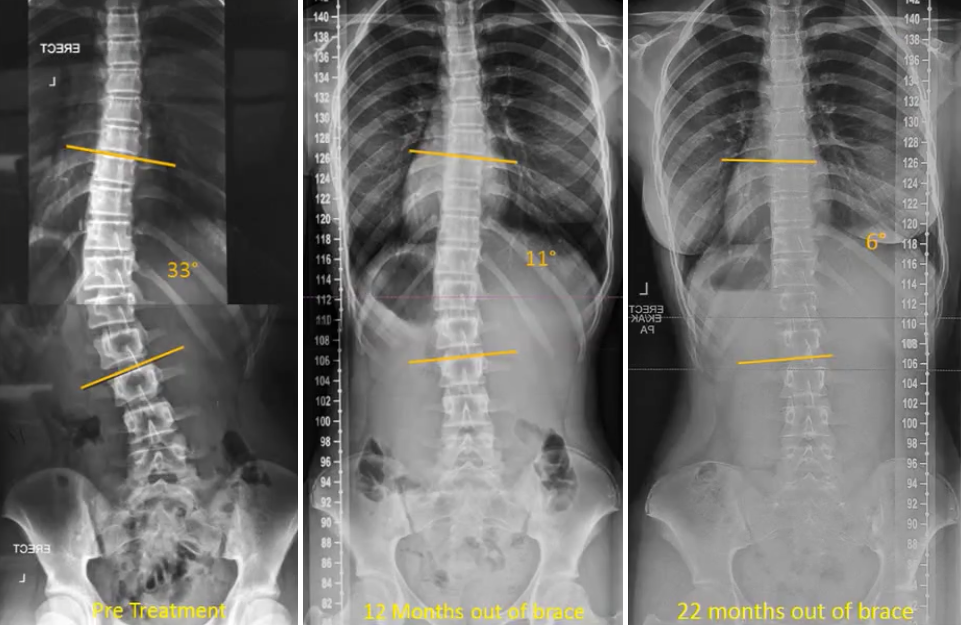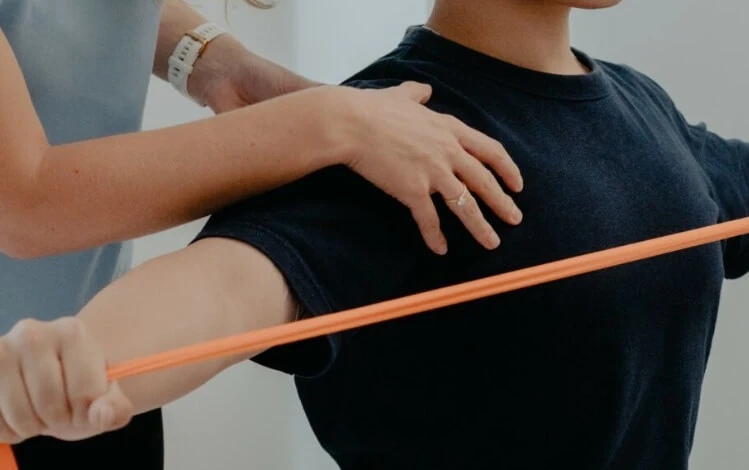Scoliosis is an abnormal lateral curvature of the spine along its longitudinal axis. This condition may be congenital or may develop gradually during growth and development. In addition to the obvious cosmetic changes, scoliosis can cause discomfort, pain, and interfere with other aspects of body function. Therefore, early and thorough evaluation of scoliosis is the first step in ensuring successful treatment.

Scoliosis Assessment Physiotherapy Process
First, a professional therapist will make an initial contact with the patient to get in-depth information about his/her medical history, lifestyle, and symptom presentation. This individualized communication helps the therapist better understand the patient’s background and specific needs, providing the necessary context for the subsequent evaluation.
Next comes a detailed scoliosis physical examination. The therapist will scrutinize the patient’s standing posture, walking style, and the curvature of the spine. Through a visual inspection, the therapist can make an initial determination of spinal problems and set the stage for a more in-depth subsequent evaluation.
To obtain more accurate data, the therapist will utilize advanced technology to take measurements. This may include the use of things like X-rays or other magnetic resonance imaging (MRI) 3-D stereophotography techniques to obtain detailed images of spinal structures. These images allow the therapist to further analyze the patient’s spinal curvature, torsion, and other key parameters to provide a scientific basis for the development of subsequent treatment.
During the course of scoliosis assessment physiotherapy, the therapist will also use a series of functional tests. This may include testing the patient’s flexibility, muscle strength, balance, and more. Through these tests, the therapist is able to gain a more comprehensive understanding of the patient’s physiological condition, which helps to develop a more individualized and precise rehabilitation plan.
The comprehensive analysis of the assessment results is a key part of the process. The therapist will consider the history, visual observations, imaging data, and functional test results to develop an in-depth understanding of the patient’s spinal problems. This analysis provides the basis for the development of an individualized rehabilitation plan to ensure that treatment is targeted and effective.

Scoliosis Assessment Physiotherapy Programs and Techniques
Physiotherapy is a non-invasive rehabilitation tool that aims to correct the curvature of the spine, enhance muscle support, and improve posture and function through targeted exercises and technical interventions.
An individualized rehabilitation program is the core of physical therapy. The therapist will develop a practical rehabilitation program that is tailored to the patient’s specific situation. This may include customized rehabilitation exercises, postural training, and a series of targeted exercise therapies. Through these methods, patients can gradually improve the structure and function of their spine under the guidance of a specialized therapist.
Physical therapy programs for scoliosis often focus on strengthening the core muscles. The core muscles are an important group of muscles that support the spine, and through planned exercise, can effectively improve spinal stability. Physical therapists will design a series of targeted core exercises designed to strengthen the patient’s abdominal, back and pelvic floor muscles to provide better support and balance.
In addition to targeted exercises, the physical therapist may also use a number of specialized techniques to intervene. These include manual therapy, traction therapy, and other physiologic therapies. Manual therapy works through the therapist’s hand techniques to adjust the spine to promote joint flexibility and stability. Traction therapy, on the other hand, helps to reduce pressure and improve spinal symmetry by stretching the spine.
Patient self-management is also important in a physical therapy program. Therapists will often instruct patients on proper posture and movement, and how to maintain good spinal health in their daily lives. This includes proper sitting and standing postures, as well as how to organize work and rest periods appropriately.
The goal of the entire physical therapy program is to help patients effectively manage their scoliosis, reduce pain, and improve their quality of life. Through planned rehabilitation measures, patients will not only feel relief from their symptoms, but will also have an increased awareness of spinal health, leading to better prevention and management of spinal problems.

Key Features of Forethought’s Scoliosis Assessment Physiotherapy Products
Advanced Sensing Technology: Forethought products utilize advanced sensing technology to monitor a patient’s spinal motion and curvature in real time. Through accurate data collection, professional therapists can have a more comprehensive understanding of the patient’s spinal condition, providing a scientific basis for individualized treatment plans.
Intelligent Analysis and Reporting: Forethought not only collects a large amount of spinal data, but also generates detailed assessment reports through intelligent analysis algorithms. These reports not only provide the therapist with comprehensive information about the patient, but also provide the patient with a clear understanding of the progress of treatment.
Comfortable and Convenient Wearing Design: Forethought products are designed with patient comfort in mind, utilizing lightweight and soft materials to ensure that patients feel comfortable while wearing them without interfering with their daily activities. This user-friendly design makes patients more willing to wear the Forethought for longer periods of time, thus obtaining more accurate monitoring data.
Scoliosis assessment physiotherapy begins with a comprehensive assessment identifying unique components of the spinal curve. A recent standing x-ray (both from the front and the side) is desirable and will be used to personalize your program based on the unique properties of each curve. Please contact us to ensure you have the appropriate imaging performed prior to your initial assessment.
Based on your assessment findings, a home exercise program is developed to optimize posture, strength, motor control and function. The personalized program often consists of postural corrections combined with specific breathing patterns and stabilization activities. These activities help develop better awareness and control of the spine. In adolescent scoliosis the primary goal of therapy is to minimize further progression of the scoliotic curve especially during times of peak growth. In adults treatments are aimed at improving quality of life, decreasing severity of future degeneration, and reducing pain if present.
Références
- Scoliosis Research Society. “Scoliosis: Overview.” https://www.srs.org/patients-and-families/conditions/scoliosis
- American Physical Therapy Association. “Physical Therapy for Scoliosis.” https://www.apta.org/patient-care/condition/scoliosis
- Mayo Clinic. “Scoliosis: Diagnosis and Treatment.” https://www.mayoclinic.org/diseases-conditions/scoliosis/diagnosis-treatment/drc-20351288
- National Institute of Arthritis and Musculoskeletal and Skin Diseases. “Scoliosis: Diagnosis and Treatment.” https://www.niams.nih.gov/health-topics/scoliosis
- Spine-health. “Scoliosis: Diagnosis and Assessment.” https://www.spine-health.com/conditions/scoliosis/scoliosis-diagnosis
- Journal of Orthopaedic & Sports Physical Therapy. “Scoliosis and Physical Therapy: A Comprehensive Review.” https://www.jospt.org/doi/full/10.2519/jospt.2014.4976
- Cleveland Clinic. “Scoliosis: Assessment and Treatment.” https://my.clevelandclinic.org/health/diseases/15084-scoliosis
- International Journal of Physiotherapy and Research. “Evaluation and Treatment of Scoliosis through Physiotherapy.” https://www.ijprjournal.com/doi/10.16965/ijpr.2020.159
- National Scoliosis Foundation. “Scoliosis Physical Therapy and Exercise.” https://www.scoliosis.org/treatment/physical-therapy/
- Trobisch P, Suess O, Schwab F. “Idiopathic Scoliosis: Diagnosis and Treatment.” Dtsch Arztebl Int. 2010;107(49):875-883. doi: 10.3238/arztebl.2010.0875. https://www.aerzteblatt.de/int/archive/article/83257

